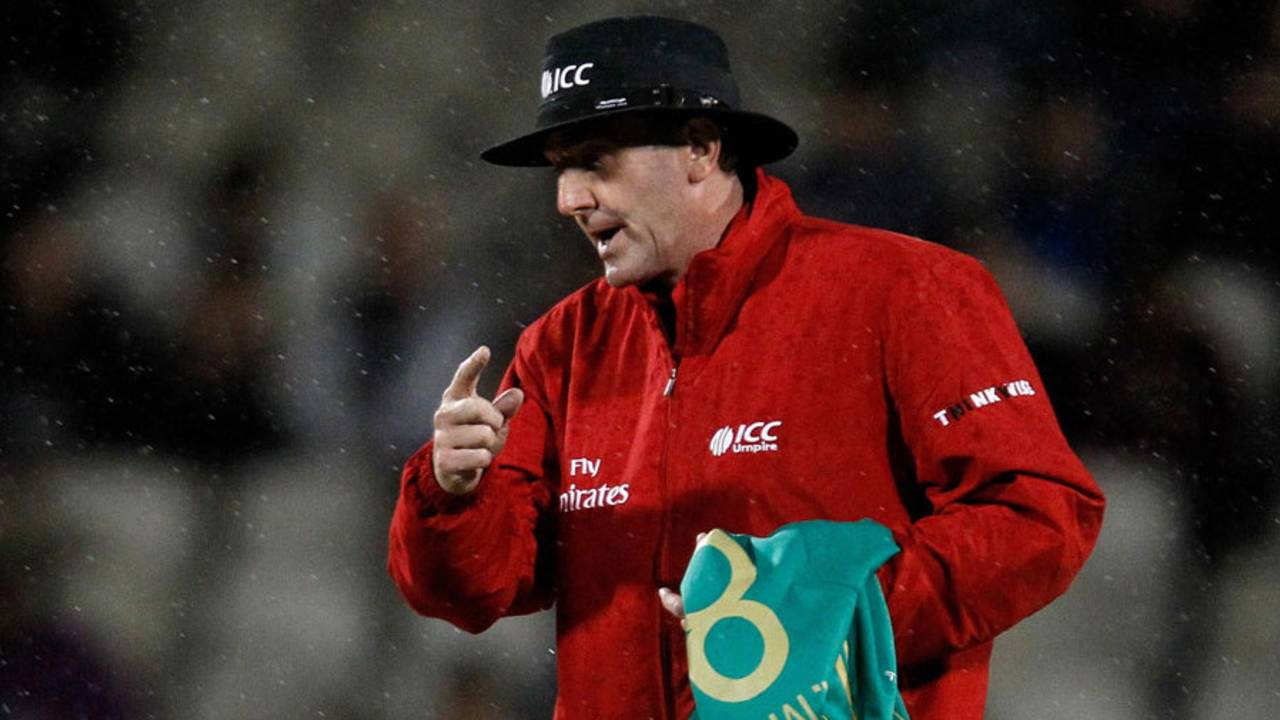The 25 first-class umpires, increasingly concerned for their own safety in an era of ever-powerful batsmen, modern bats and the kind of explosive hitting on view at Twenty20 finals day, are examining forms of protection including to the head, the heart and the back of the neck, that could be introduced in one day and championship matches next season.
At their end of season meeting next month, the umpires will discuss research carried out at Cardiff Metropolitan University, where a form of non-foam material - markedly different from the kind of chest protection Colin Cowdrey used when facing Dennis Lillee and Jeff Thomson 40 years ago - to cover the heart is being tested in secret. Visors and a form of head protection less cumbersome than batting helmets are also being developed.
A number of umpires have offered to trial equipment before next season. They have voiced their concerns to Chris Kelly, the ECB' s umpires manager, and last March met George Fox, a specialist in sports protection. "Umpires are in a precarious position. Being struck on the shins and thighs is not going to end their careers but the sternum, the heart, the kidneys and the back of the head are vulnerable places. But we do not want a superman syndrome and overheat them or produce head gear that will make them look ridiculous," Fox said.
"Additional protection would need to fit within the umpire's conformity and not be distracting to the batsman. The head moves more quickly out of the line than the body and there is a real risk of the ball deflecting off the stumps, but because of the question of insurance, equipment would be an umpire's personal choice. Any sensible solution would be well received by them and would not necessarily need an ECB stamp of approval," he said.
Fox, who is liasing with Dr Craig Ranson of the sports injury research group at Cardiff Metropolitan University, emphasised that extra protection has become uppermost in umpires' minds following the death of Phillip Hughes, the Australia batsman who was struck by a ball on the back of his head last November.
"The focus is on non-foam technologies as maintaining unexaggerated body temperature is critical when standing in high emperatures," Fox said. It is intended the first designs will be completed in late 2015 with trials going ahead in time for the 2016 season.
The umpires feel vulnerable when standing at square leg as well as facing the striker. Rob Bailey, a former England batsman who has had a long-serving umpiring career at county and international level, said that they were worried about their unprotected hearts and ribs. "A lot of people are in danger. Bats are massive now and are only going to become more powerful and the ball is pinging off them. Fortunately no-one has been badly hit.
"I have been struck once this season. Umpires are pretty mobile now but the ball followed me at square leg in a televised match and luckily hit the battery pack strapped on my back. Some umpires are wearing boxes now and chest pads in the future are a consideration."
Graham Lloyd believes that the heart is the "vital organ" to protect. Russell Evans said that his main concern was the drive that deflected off the stumps towards his body. "I would not want to wear a helmet for a full day's play and my worry is that this will turn into a health and safety requirement," he said.
Evans, who monitors the development of equipment through his own company, B3 Cricket, believes that bats are as technologically advanced as they can be. "The only way that the ball will be hit harder is if batsmen become stronger," he said. The Laws of Cricket, controlled by MCC, state that the maximum width and length of bats are 4.25in/10.8cm and 38in/96.5cm respectively at their widest/longest points.
At least two companies are thought to be working on a form of light chest protection that can be worn under an umpire's white coat, so experiments in Cardiff are being conducted in secret and the nature of the non-foam material is not being disclosed. An ECB spokesman said: "Nothing has been decided yet for next season."
